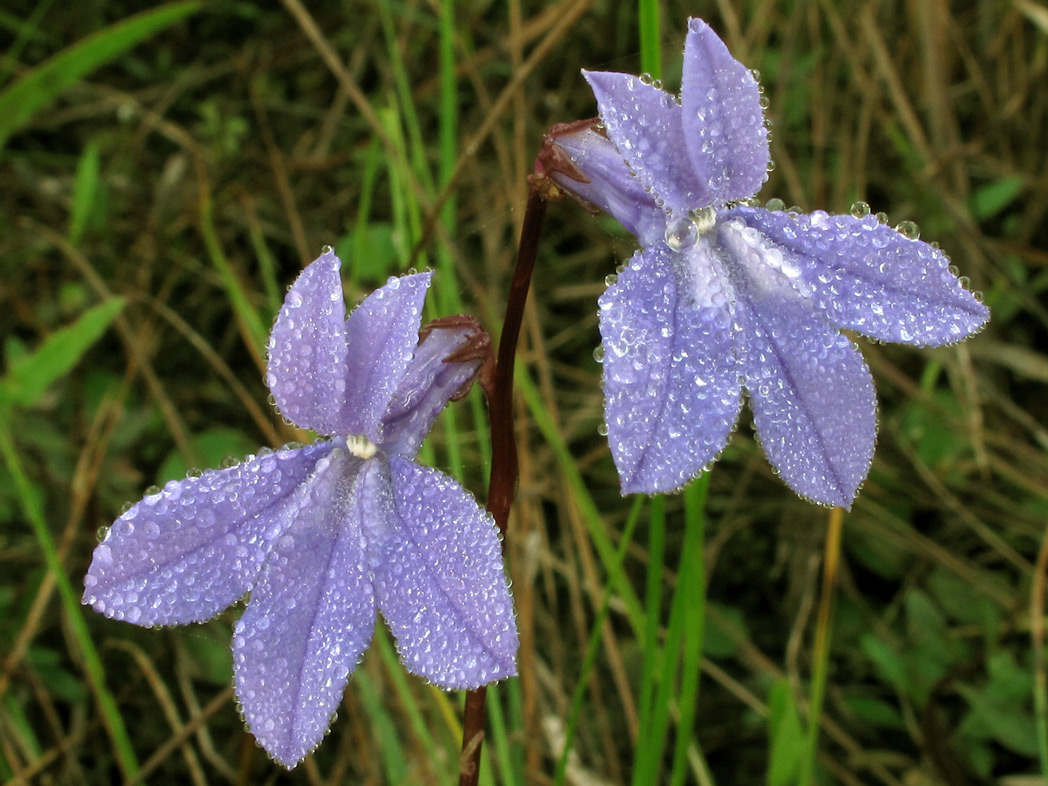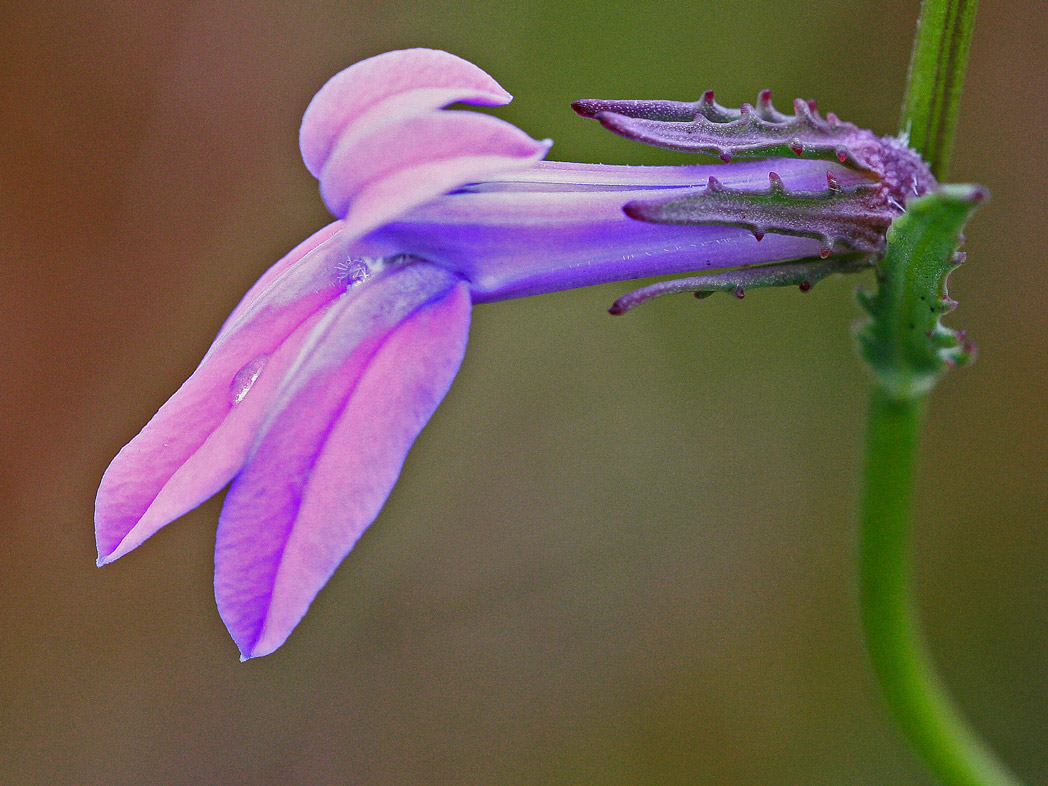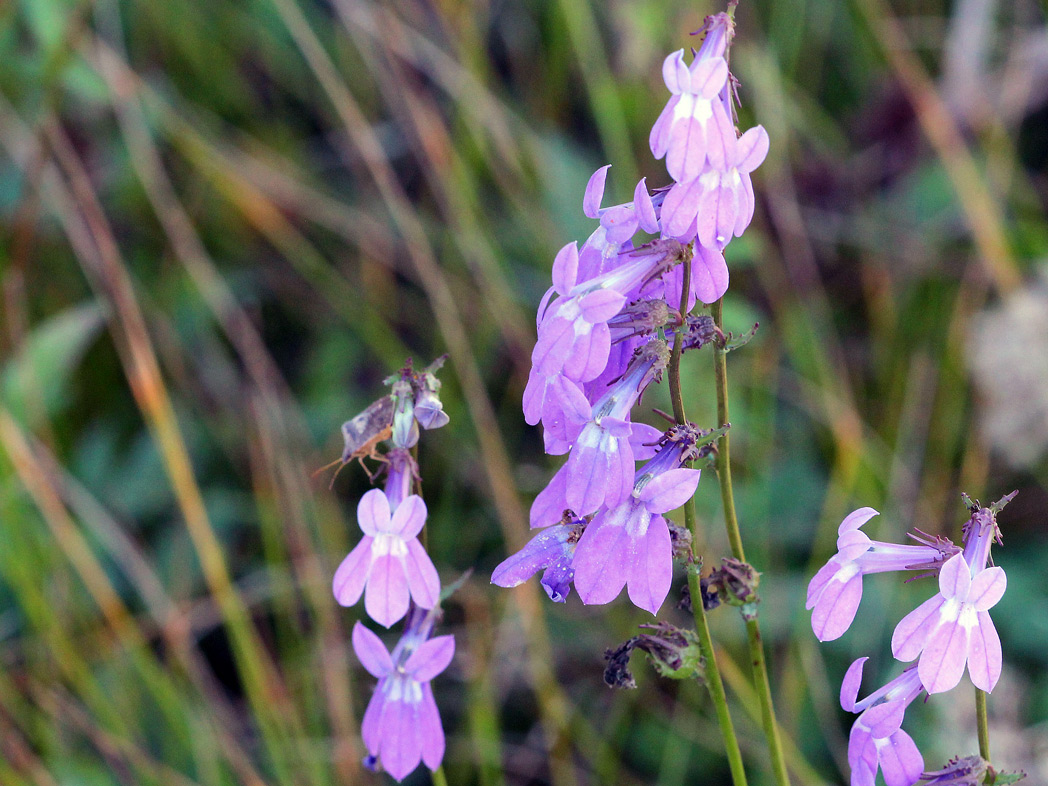Glade Lobelia
Pictured above: Glade Lobelia (Lobelia glandulosa) by Mary Keim. Click on terms for botanical definitions. View post as a PDF.
Glade lobelia (Lobelia glandulosa) is a charming perennial wildflower found in wet prairies, marshes, swamps and wet pinelands throughout Florida where it attracts hummingbirds, butterflies and bees. It is largely unnoticed in the wild until it flowers.


In spring, the plant emerges as a basal rosette of linear to lanceolate leaves. By summer, the flower stalk appears. Flowers are borne on erect spikes. They open in late summer and fall (year-round in South Florida), and vary in color from lavender to blue to violet. Each flower is two-“lipped.” The upper lip has two fused petals and is reflexed; the lower lip has three fused petals with a fine pubescence that extends into the throat. Stem leaves are alternately arranged, with leaf margins bearing many fine, gland-tipped teeth. Seeds are born in inconspicuous capsules.
The genus Lobelia is named for Matthias de Lobel (1538-1616), a Flemish physician, botanist and author of a landmark botany textbook. The species epithet glandulosa is from the Latin for “having kernels or glands,” and refers to the gland-tipped teeth on the leaf margins.
Family: Campanulaceae (Bellflower family)
Native range: Nearly throughout
To see where natural populations of Glade lobelia have been vouchered, visit florida.plantatlas.usf.edu.
Hardiness: Zones 8A–10B
Soil: Moist to wet, well-drained to poorly drained or limestone soils
Exposure: Full sun to partial shade
Growth habit: 2–4’ tall
Propagation: Seed
Garden tips: Glade Lobelia is best suited for wildflower gardens, naturalistic landscapes and habitat restorations. It will die back in the winter and may require annual pruning of old flowering stems. It is neither salt- nor drought-tolerant.
Glade Lobelia plants are occasionally available from nurseries that specialize in Florida native plants. Visit www.plantrealflorida.org to find a nursery in your area.
For more information on other Lobelia species, see these resources:

